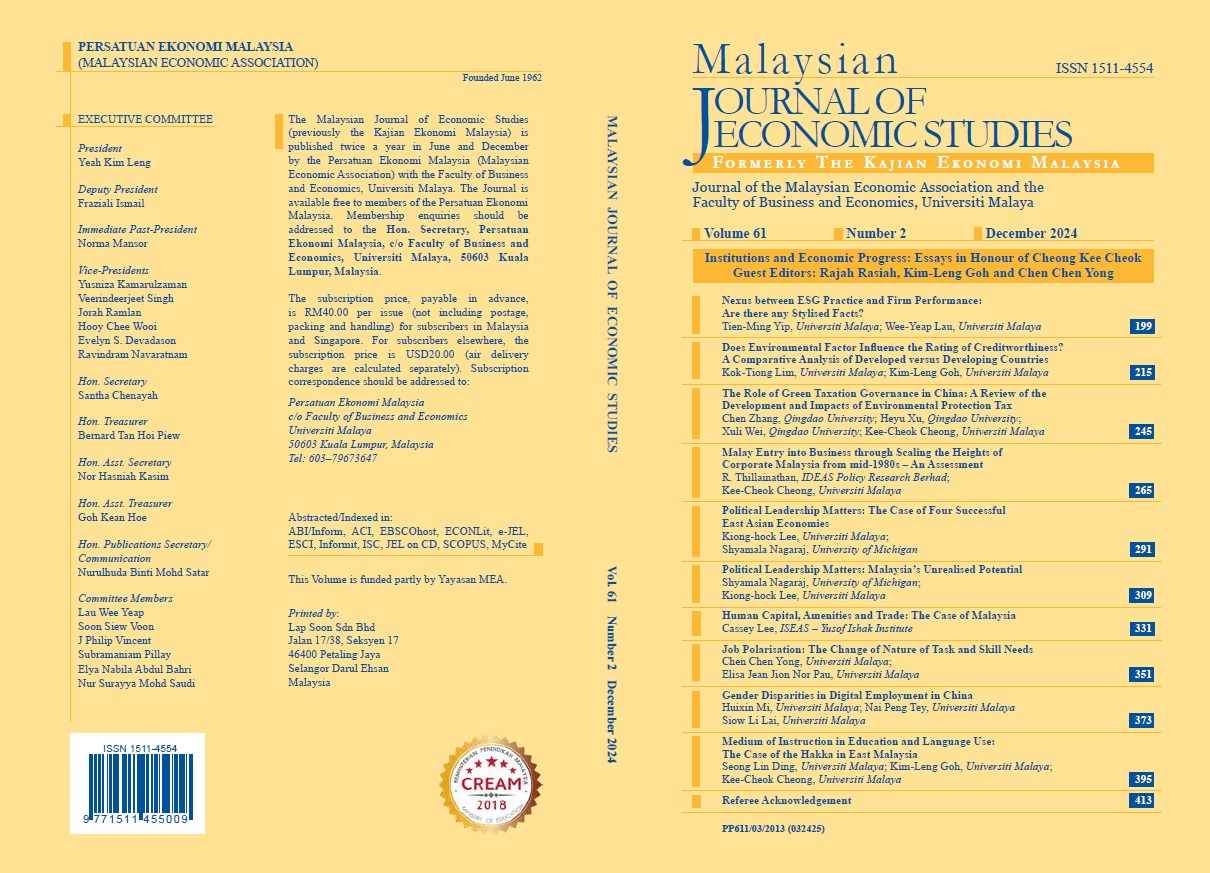Medium of Instruction in Education and Language Use: The Case of the Hakka in East Malaysia
DOI:
https://doi.org/10.22452/MJES.vol61no2.10Keywords:
Medium of instruction, heritage language, identity, intergenerational change, HakkaAbstract
In the context of education in Malaysia, the challenges faced by the ethnic Chinese population consist of having to learn Malay and understanding the need to acquire fluency in English for economic mobility. Should they opt for vernacular education, they have also to deal with Mandarin, which is not their native/heritage language. Adopting a quantitative method, this study examines how Hakka communities in East Malaysia navigate the challenges and the consequences of their decisions on language use. Three specific questions are addressed: (a) What is the impact of medium of instruction in education on the language used by students at home and socially? (b) Has this impact changed across generations? (c) How has language use in school impacted identities? The findings show that Hakka language is used less in everyday conversations over time. The need to preserve Hakka language to retain their ethnic identity is perceived to be less important, more so among the younger generations. The issue is most evident among individuals who attended Mandarin speaking schools, particularly the Chinese independent schools. The findings suggest an association between the education language and the shift in both usage and knowledge of the heritage language toward the education language.

